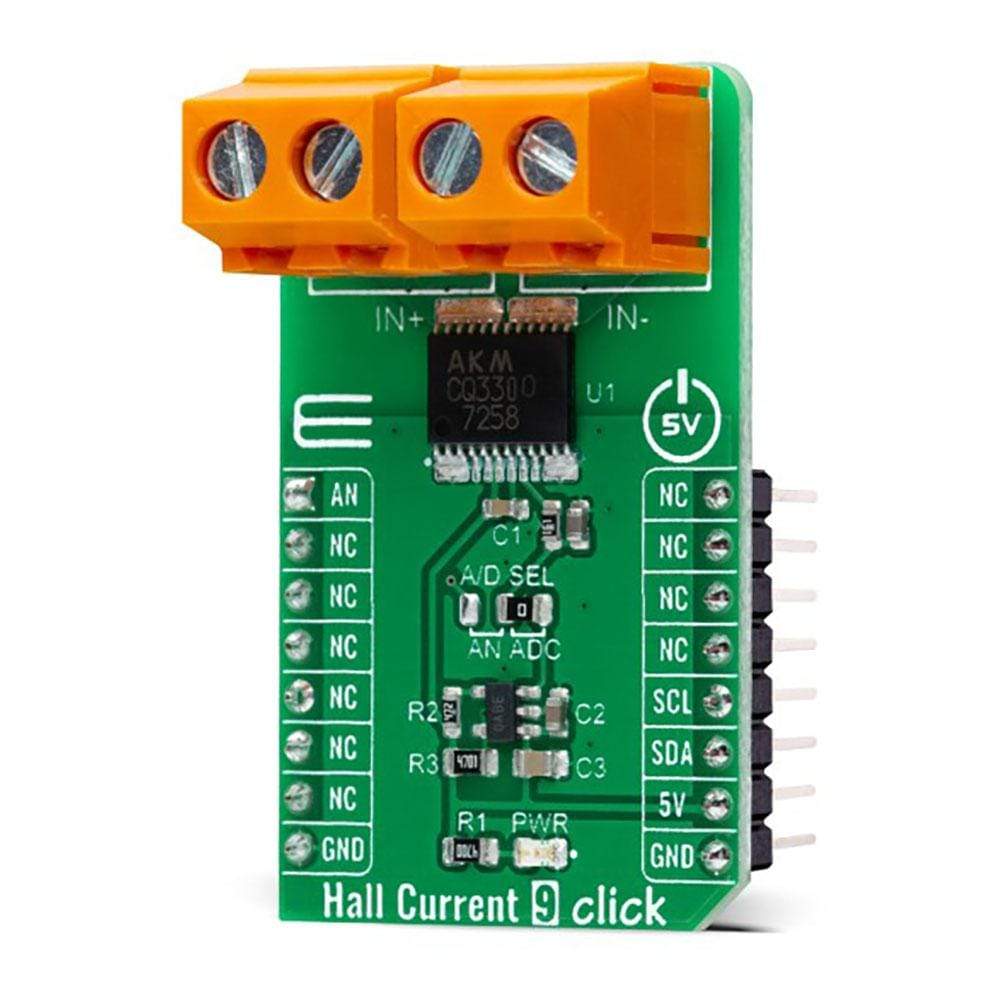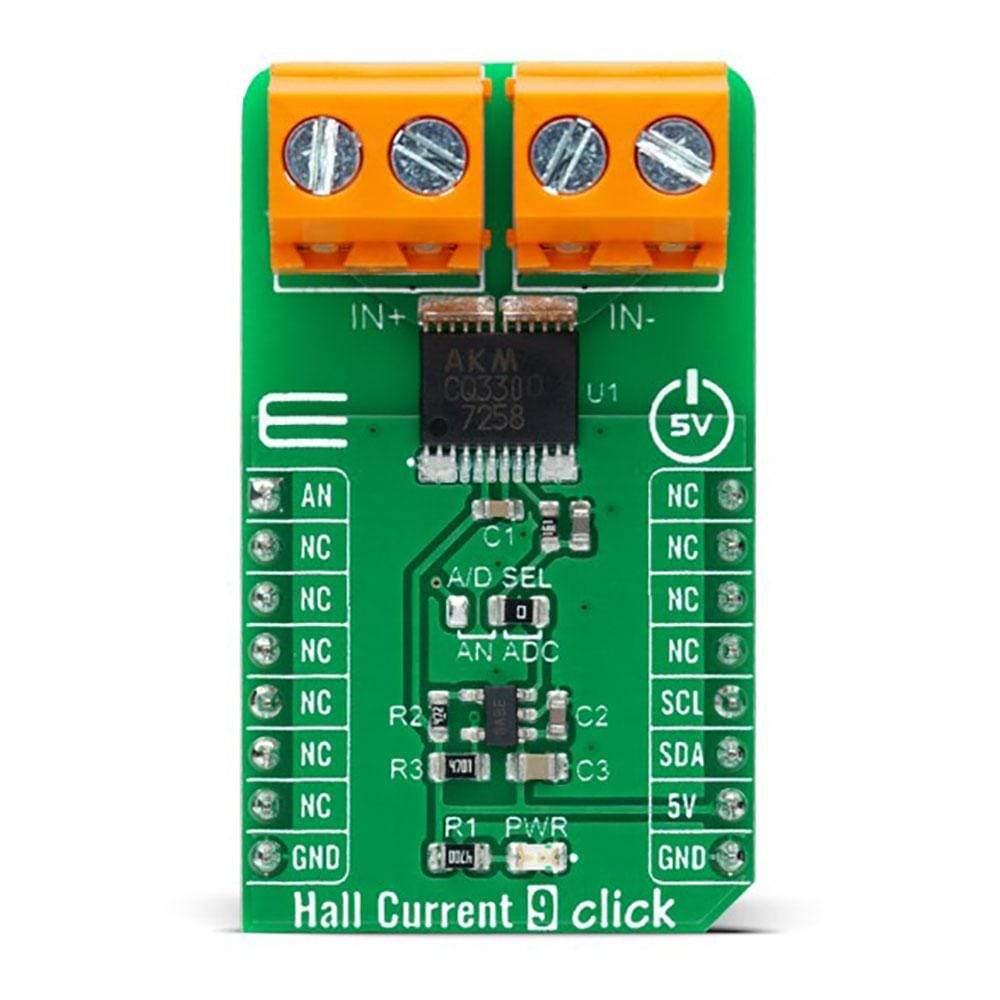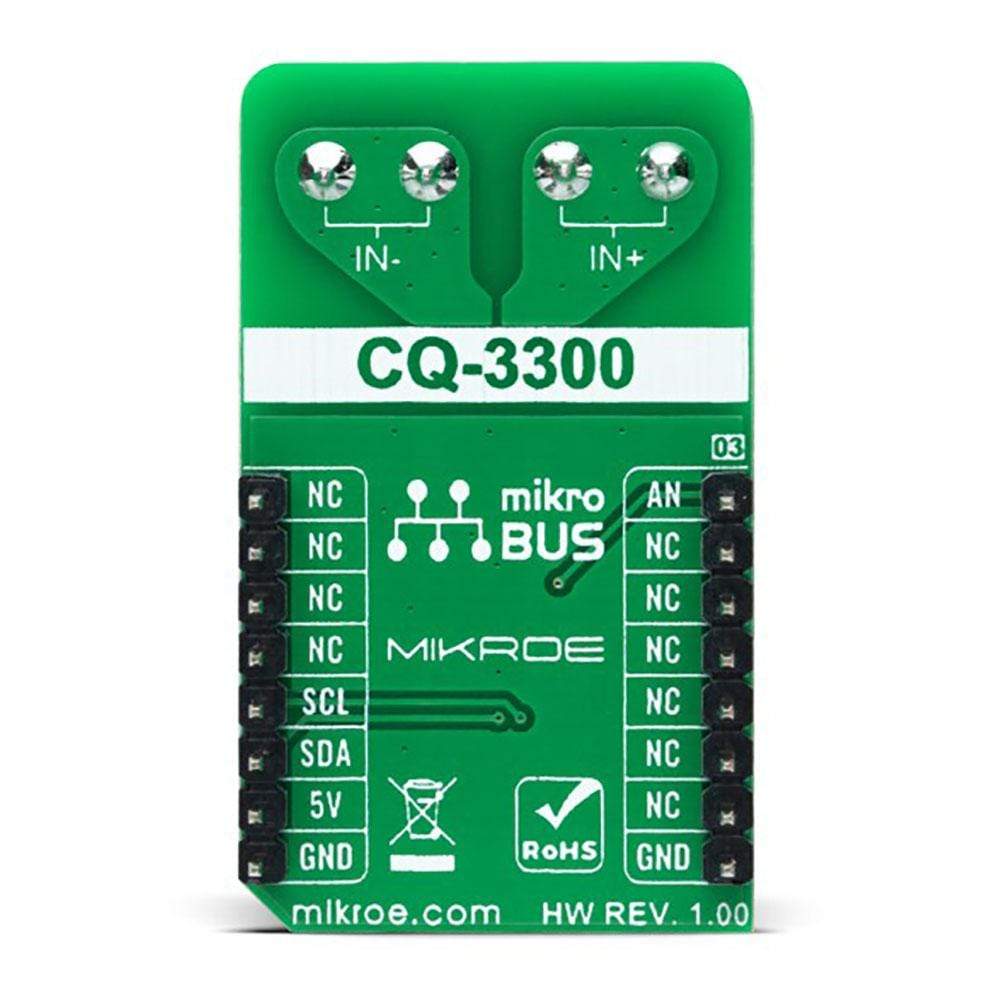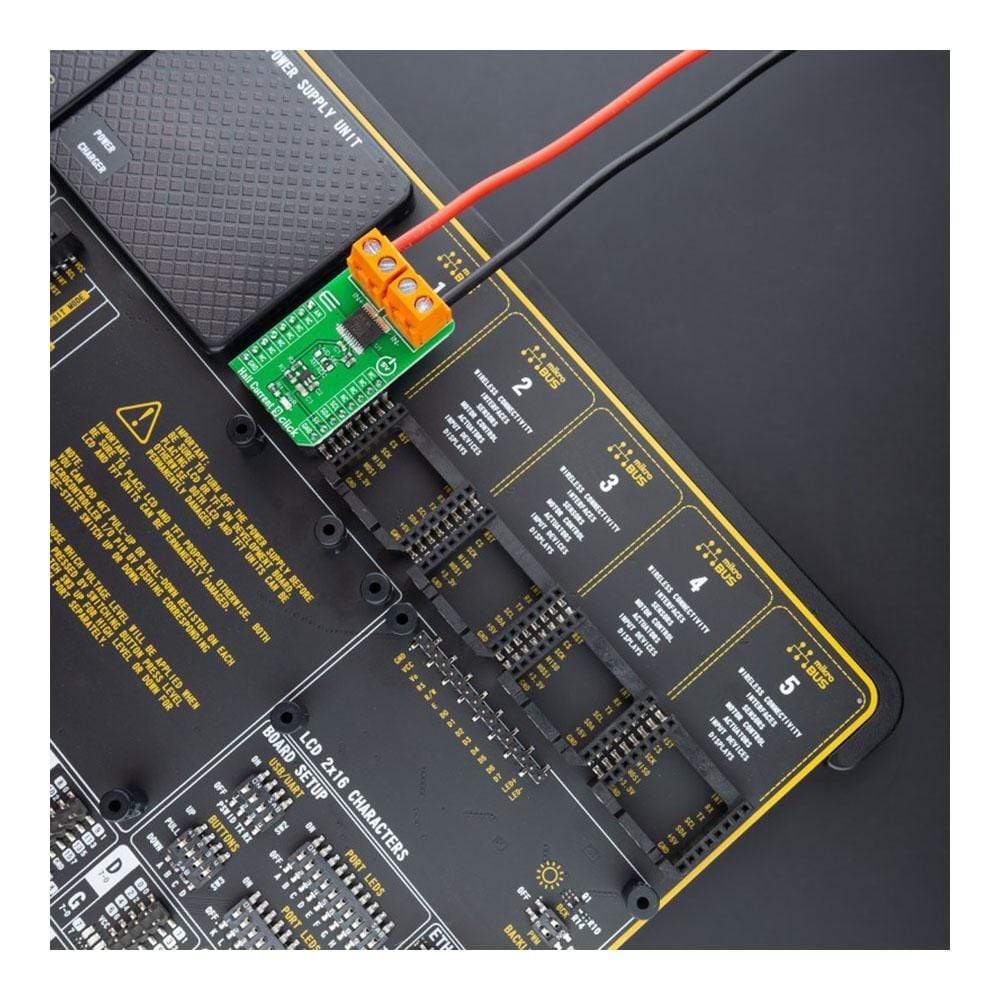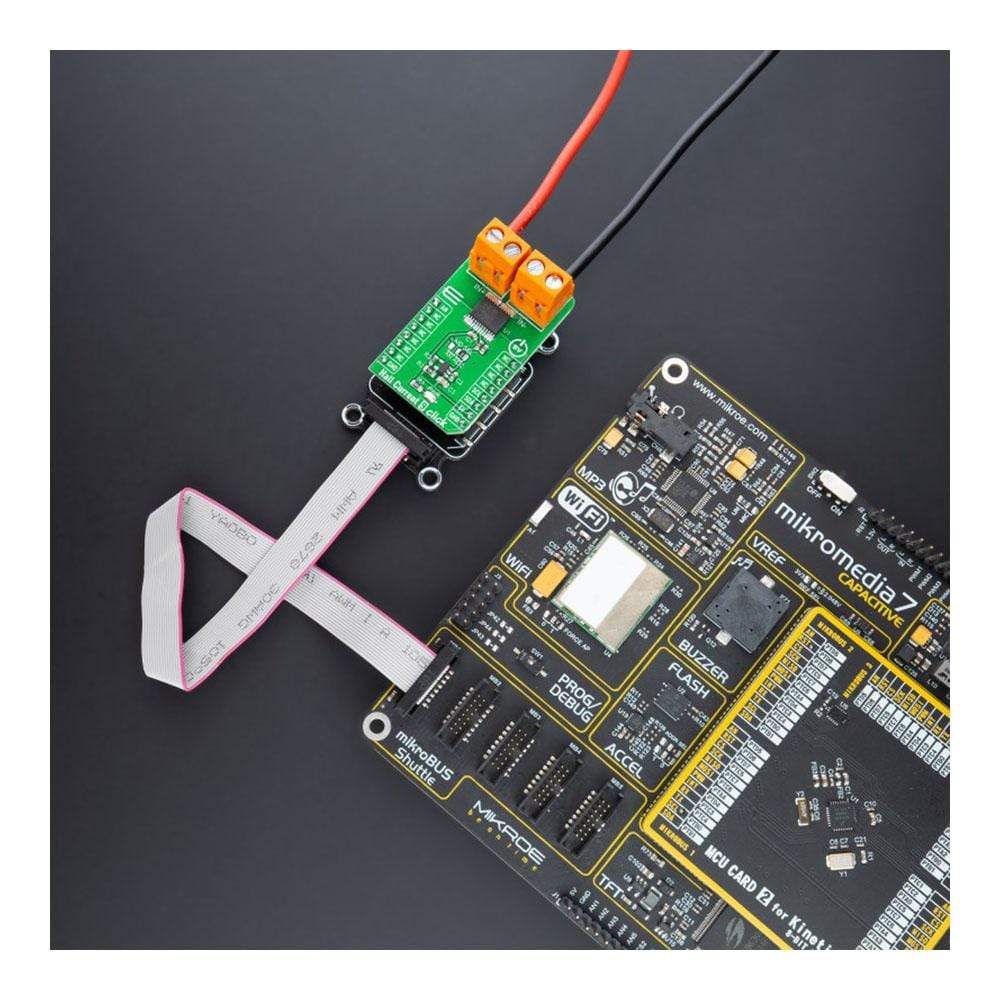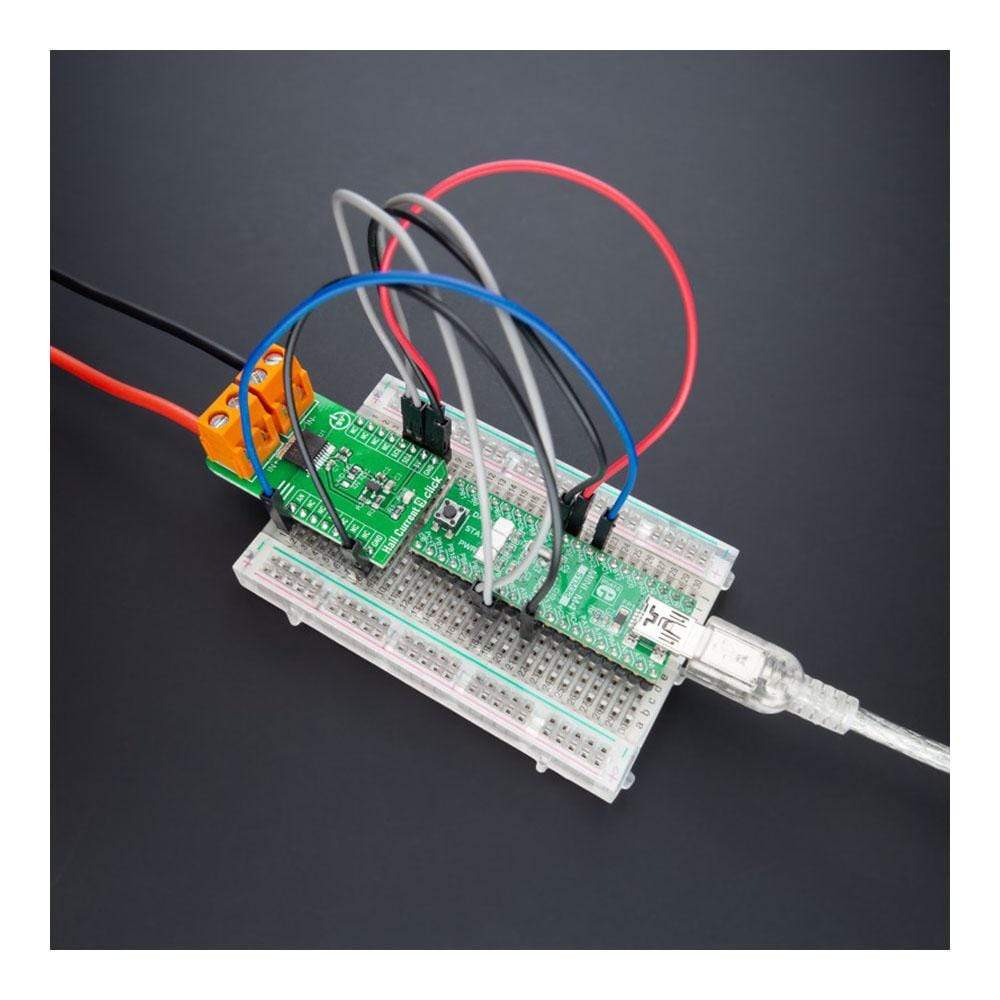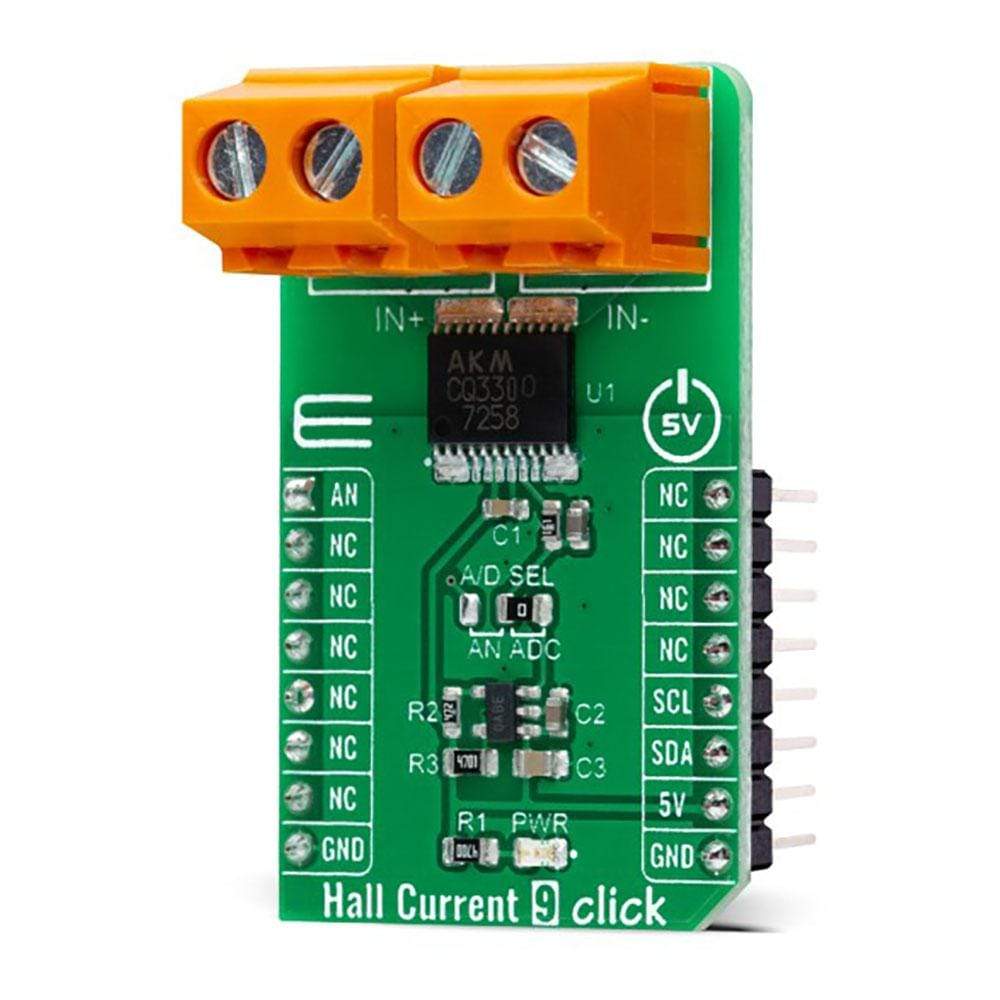
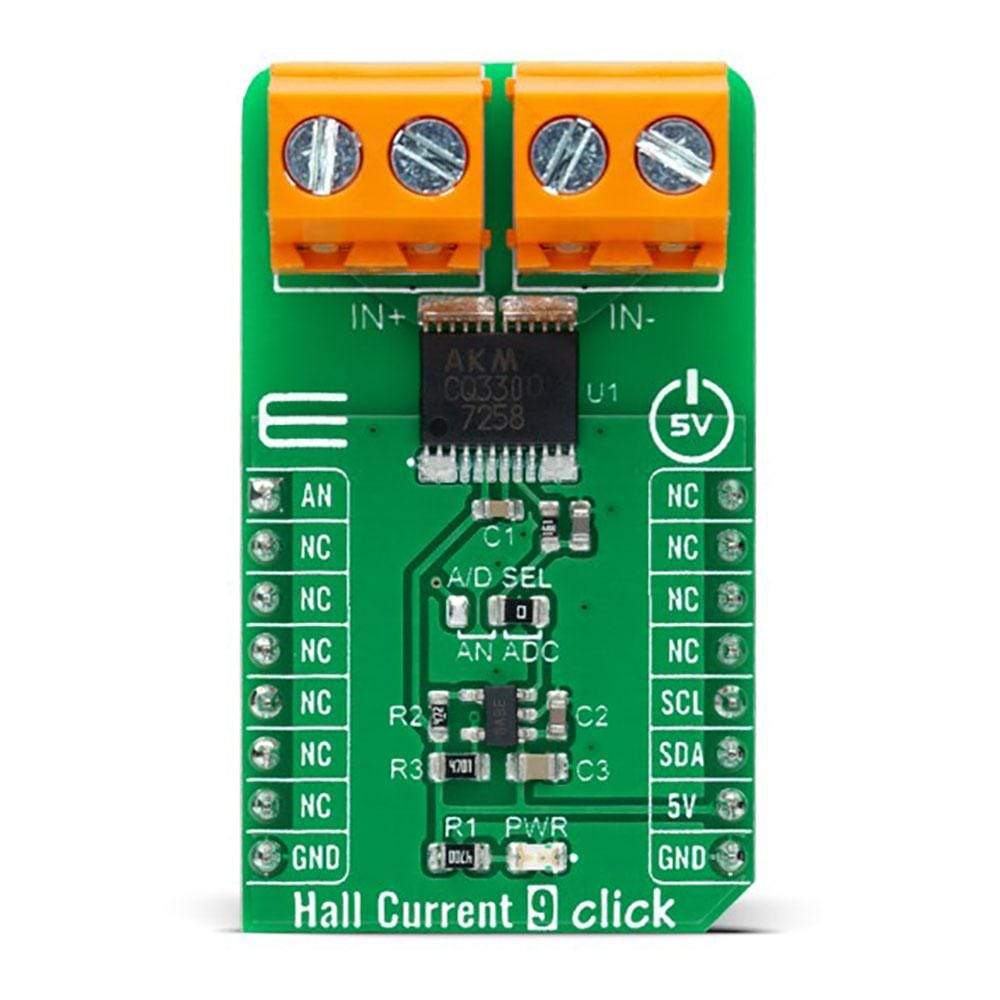
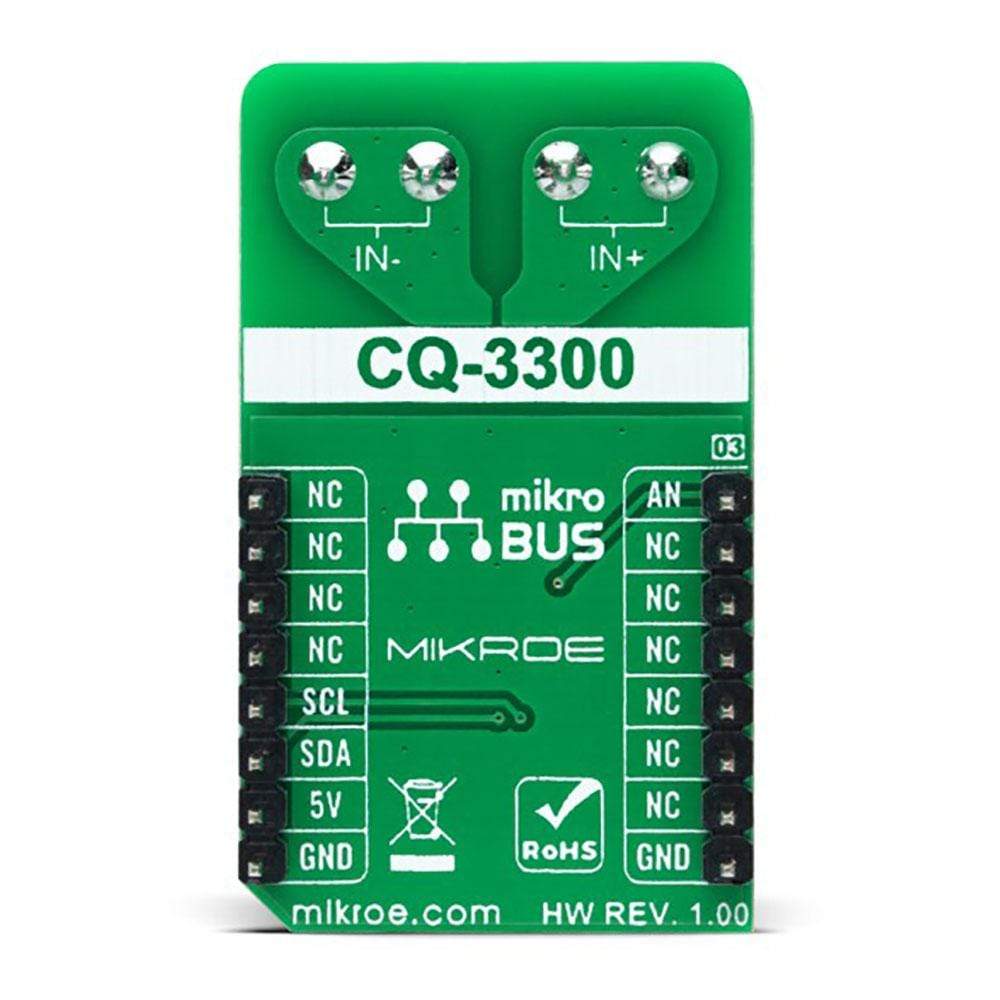
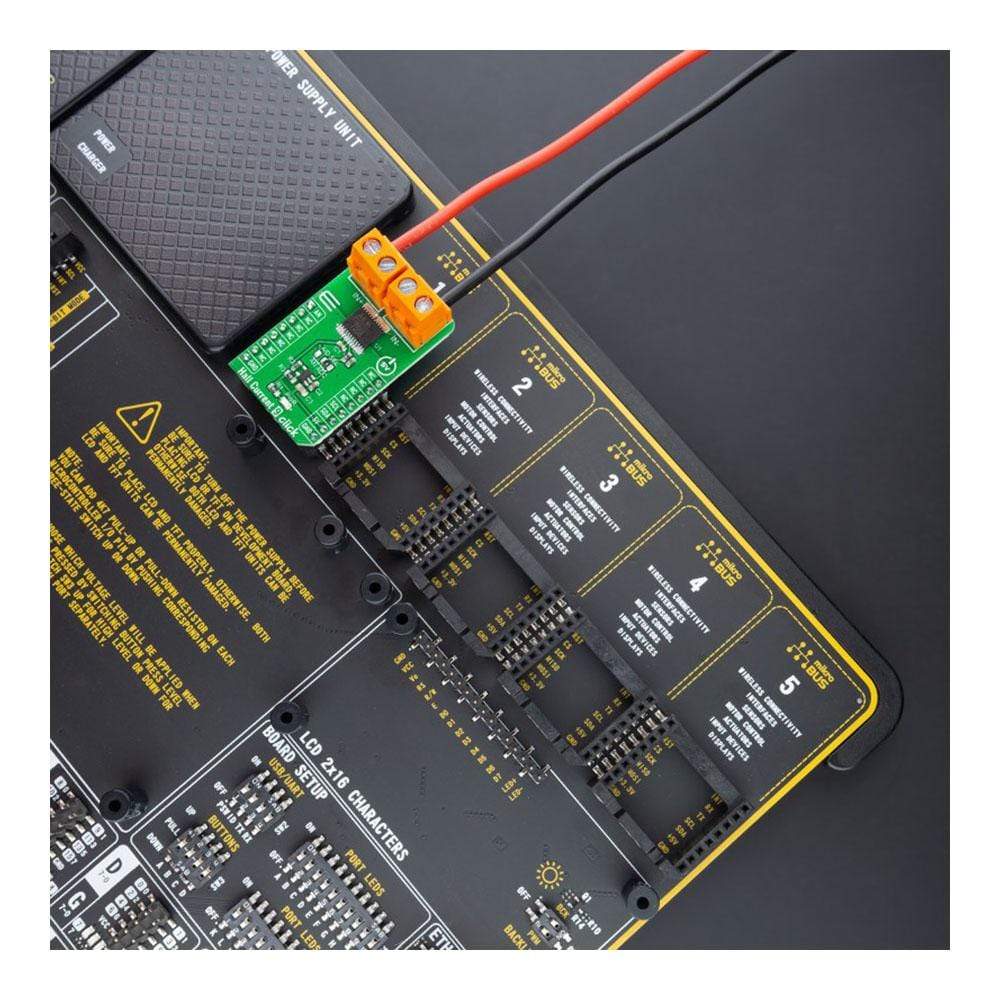
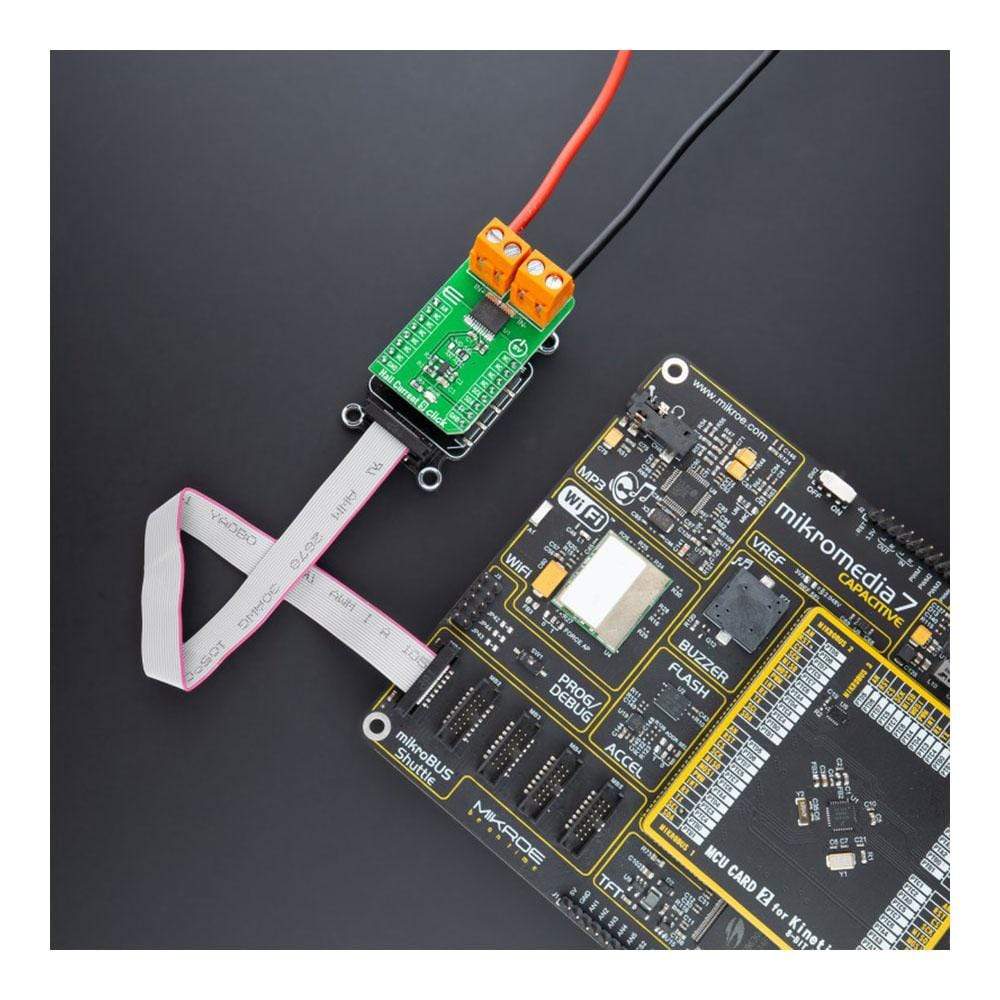
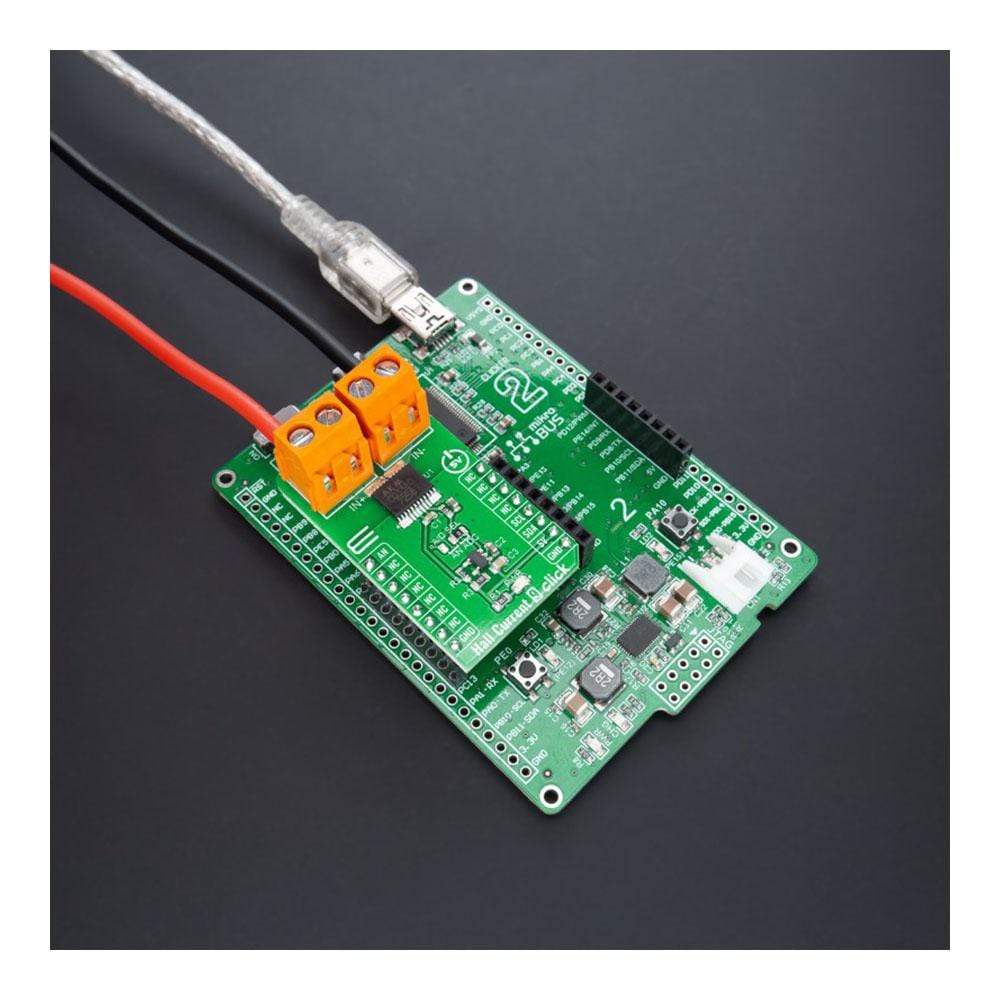
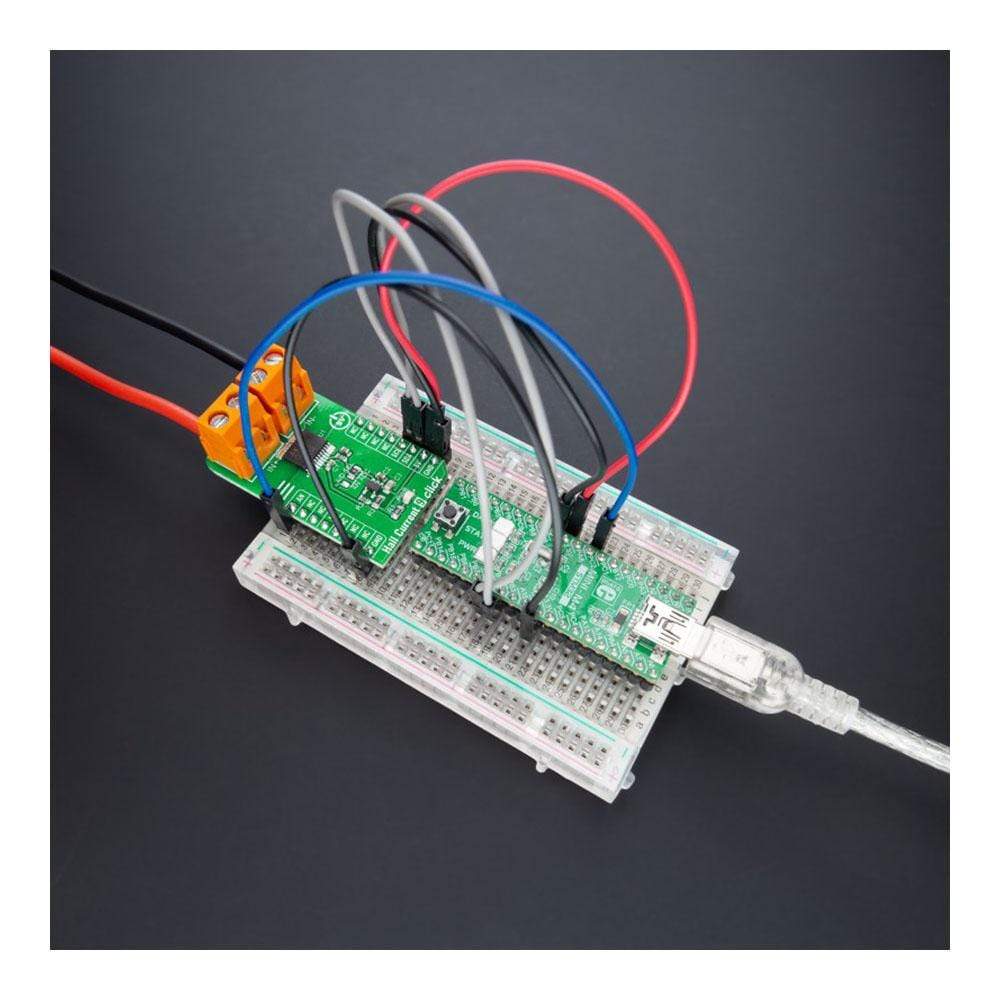
Overview
The Hall Current 9 Click Board™ is a compact add-on board that contains the coreless current sensor corresponding to the safety standards. This board features the CQ3300, a high-speed response coreless current sensor using a Hall sensor that outputs the analogue voltage proportional to the AC/DC from AKM Semiconductor. It employs a high sensitive InAs (Indium Arsenide) Hall element with the ability to detect both DC and AC with high accuracy and high speed. It has an ultra-fast high response of 0.5μsec, high galvanic isolation, and it is designed for the currents to range from -6.4A to +6.4A.
The Hall Current 9 Click Board™ is suitable for overcurrent applications and shows good performance in small-sized inverter applications.
Downloads
Le Hall Current 9 Click Board™ est une carte complémentaire compacte qui contient le capteur de courant sans noyau correspondant aux normes de sécurité. Cette carte est équipée du CQ3300, un capteur de courant sans noyau à réponse rapide utilisant un capteur à effet Hall qui délivre la tension analogique proportionnelle au courant alternatif/continu d'AKM Semiconductor. Il utilise un élément à effet Hall InAs (arséniure d'indium) à haute sensibilité avec la capacité de détecter à la fois le courant continu et le courant alternatif avec une grande précision et une grande vitesse. Il a une réponse ultra-rapide de 0,5 μsec, une isolation galvanique élevée et est conçu pour des courants allant de -6,4 A à +6,4 A.
Le Tableau à clic Hall Current 9™ convient aux applications de surintensité et présente de bonnes performances dans les applications d'onduleurs de petite taille.
| General Information | |
|---|---|
Part Number (SKU) |
MIKROE-4466
|
Manufacturer |
|
| Physical and Mechanical | |
Weight |
0.023 kg
|
| Other | |
Country of Origin |
|
HS Code Customs Tariff code
|
|
EAN |
8606027381485
|
Warranty |
|
Frequently Asked Questions
Have a Question?
Be the first to ask a question about this.

